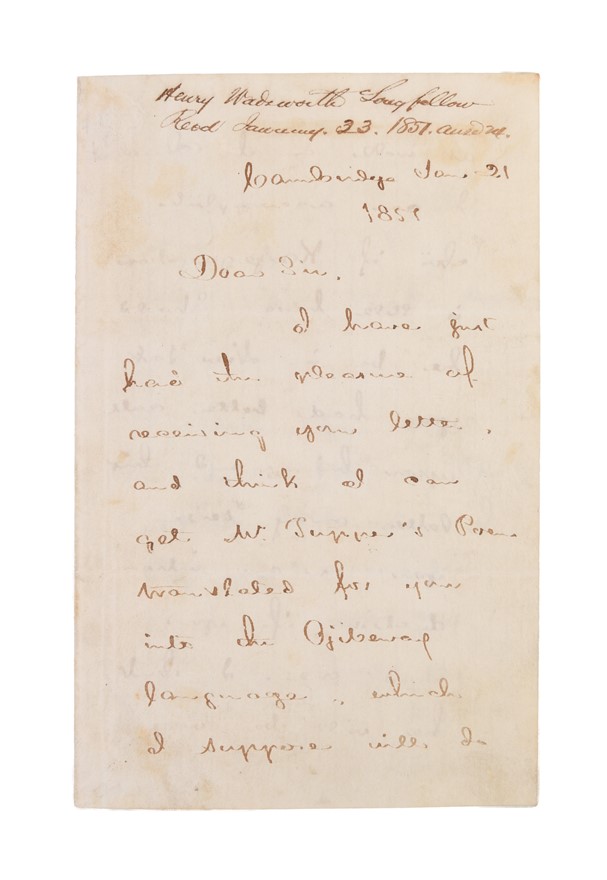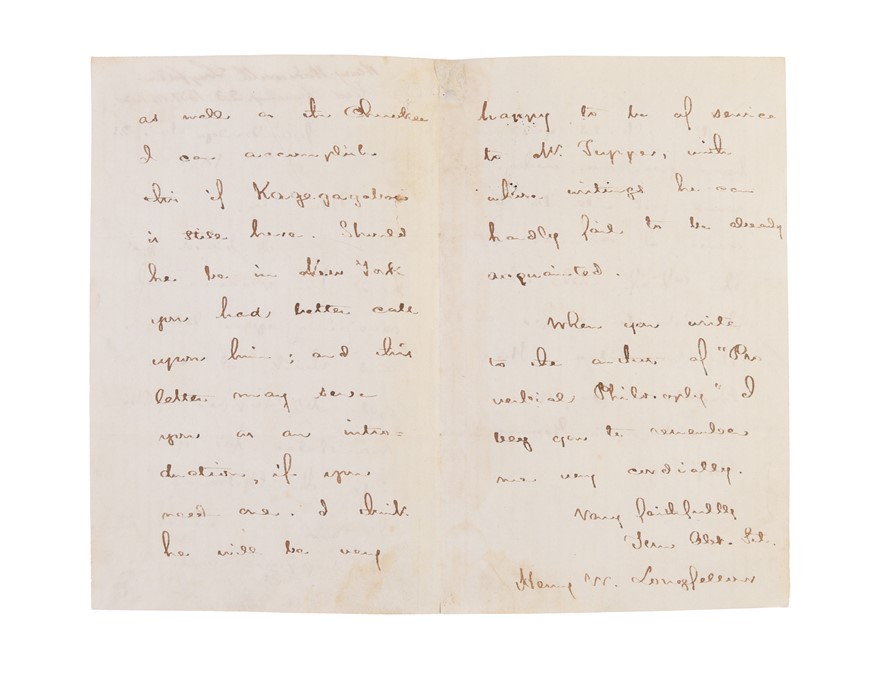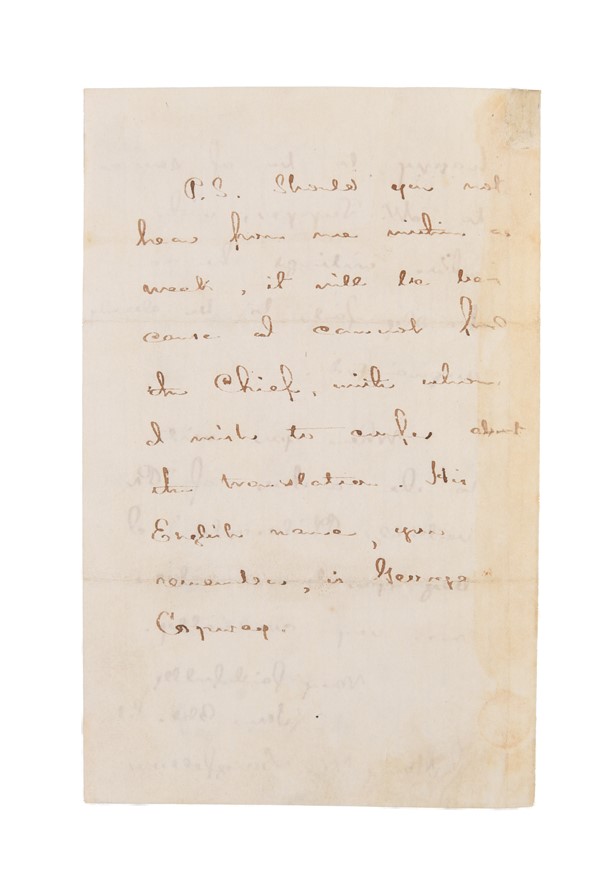ALS to an unknown correspondent offering to have one of Martin Farquhar Tupper's poems translated into Ojibwe.
LONGFELLOW Henry Wadsworth (1851.)
£1495.00
Please contact us in advance if you would like to view this book at our Curzon Street shop.
AN INTRODUCTION TO GEORGE COPWAY
Holograph ms. in brown ink, annotated by recipient at head of first page. 8vo. Bifolium lettersheet with ornamental chain watermarks, blind stamped De La Rue & Co. London. Old folds, expert repair to upper gutter edge of final page, suggesting it may have been removed from an album. 4pp. Cambridge [Mass], Jan 21st
A revealing letter from American poet Henry Wadsworth Longfellow (1807-1882) to an unknown recipient, engineering an introduction to Indigenous author and missionary George Copway (Kah-Ge-Ga-Gah-Bowh) (1818-1869) that he might translate a poem by Martin Farquhar Tupper (1810-1889) into the Ojibwe language.
An extract:
"Dear Sir,
I have just had the pleasure of receiving your letter, and I think I can get Mr. Tupper's poem translated into the Ojibeway language, which I suppose will do as well as the Cherokee. I can accomplish this if Kagegagabow is still here. Should he be in New York you had better call upon him; and this letter may serve as an introduction if you need one. I think he will be very happy to be of service to Mr. Tupper, with whose writings he can hardly fail to be already acquainted. ..."
The poem in question is almost certainly Tupper's "Hymn for All Nations" which was translated into thirty languages, including Ojibwe, for the Great Exhibition of 1851.
The proposal was clearly successful, as Copway is listed as the translator in the 1851 printed keepsake of the poem which was available at the monumental Crystal Palace Exhibition in Hyde Park (Pilling, 3940). We have been able to find no other reference to Longfellow's involvement in this translation, or indeed that the first choice of Indigenous American language for the project was Cherokee. In Longfellow's diary for 27th January 1851 he records meeting with Copway, and this letter may have prompted that engagement: "Went to town. Met Kah-ge-ga-gah'-bowh, and we went to see Stephenson's statue of the Dying Indian, which was very good" (Longfellow).
Longfellow's interest in Indigenous language and culture would continue to develop over the years that followed, and his 1855 epic poem "The Song of Hiawatha" contained many Ojibwe words.
George Copway, Mississauga Anishinaabe missionary and author, published his autobiography The Life History and Travels of Kah-ge-ga-gah-Bowh in 1847, after moving with his wife from Canada to New York. It is considered to be the first book published by a Canadian First Nations person, and went on to achieve great success going through multiple editions in both America and the UK.
Tupper made a US tour between March and April of 1851, during which he was received by Longfellow. This January letter continues "When you write to the author of 'Proverbial Philosophy' I beg you remember me very cordially", suggesting that could have been the start of their acquaintance. Initially published to modest success in 1838, Tupper's Proverbial Philosophy hit its stride when reissued with a second series in 1848. The sincere and moralising tone of the poems spoke to the turn towards sentimentalism in the mid-nineteenth century. This also made the "Hymn for All Nations" a perfect anthem for the 1851 Great Exhibition - considered to be "the first international gathering of its kind to be held for purely peaceful purposes" (Spectator, 9). The poem, which speaks of "Thy Children [...] From all realms are gathered [...] for peace on earth" echoes this exactly.
Though the recipient of the letter is unknown, it may be possible to discern from the extensive collection of Longfellow letters held at the Houghton Library, Harvard. There are six letters from George Copway to Longfellow listed in the finding aid, with dates between 1841 and 1851. There are also five letters from Martin Tupper, dated between 1851 and 1877. The recipient has annotated the first page of the letter, giving an example of their hand. There is interesting potential for further research on these relationships.
Samuel Longfellow ed. The Life of Henry Wadsworth Longfellow. Vol 2. (Boston, 1886), p.188; Luckhurst quoted by Derek Hudson. "1851-1951" in the Spectator. No 6487. 13 April 1951, pp.9-10. .
Stock Code: 252308






